
How to Use max30102: Examples, Pinouts, and Specs
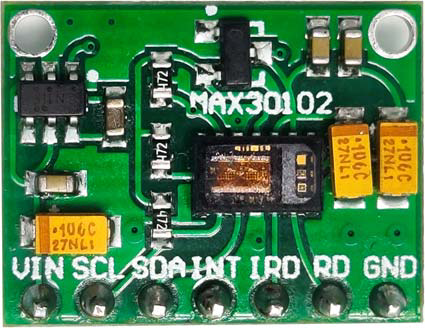
 Design with max30102 in Cirkit Designer
Design with max30102 in Cirkit DesignerIntroduction
The MAX30102 is a pulse oximeter and heart-rate sensor designed for non-invasive health monitoring applications. It utilizes photoplethysmography (PPG) technology to measure blood oxygen saturation (SpO2) and heart rate. The sensor integrates red and infrared LEDs, a photodetector, optical elements, and low-noise electronics in a compact package, making it ideal for wearable devices such as fitness trackers, smartwatches, and medical monitoring systems.
Explore Projects Built with max30102
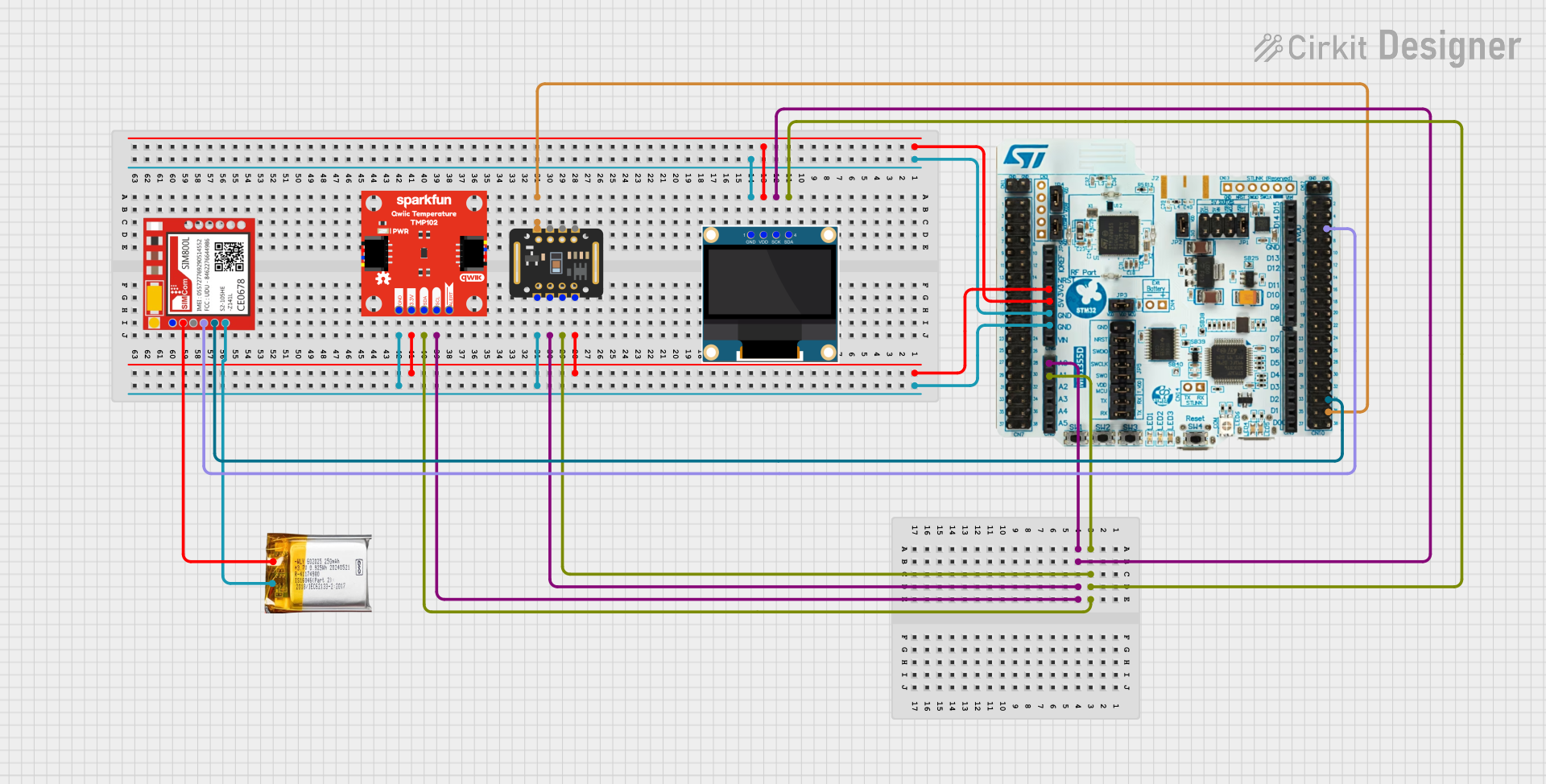
 Open Project in Cirkit Designer
Open Project in Cirkit Designer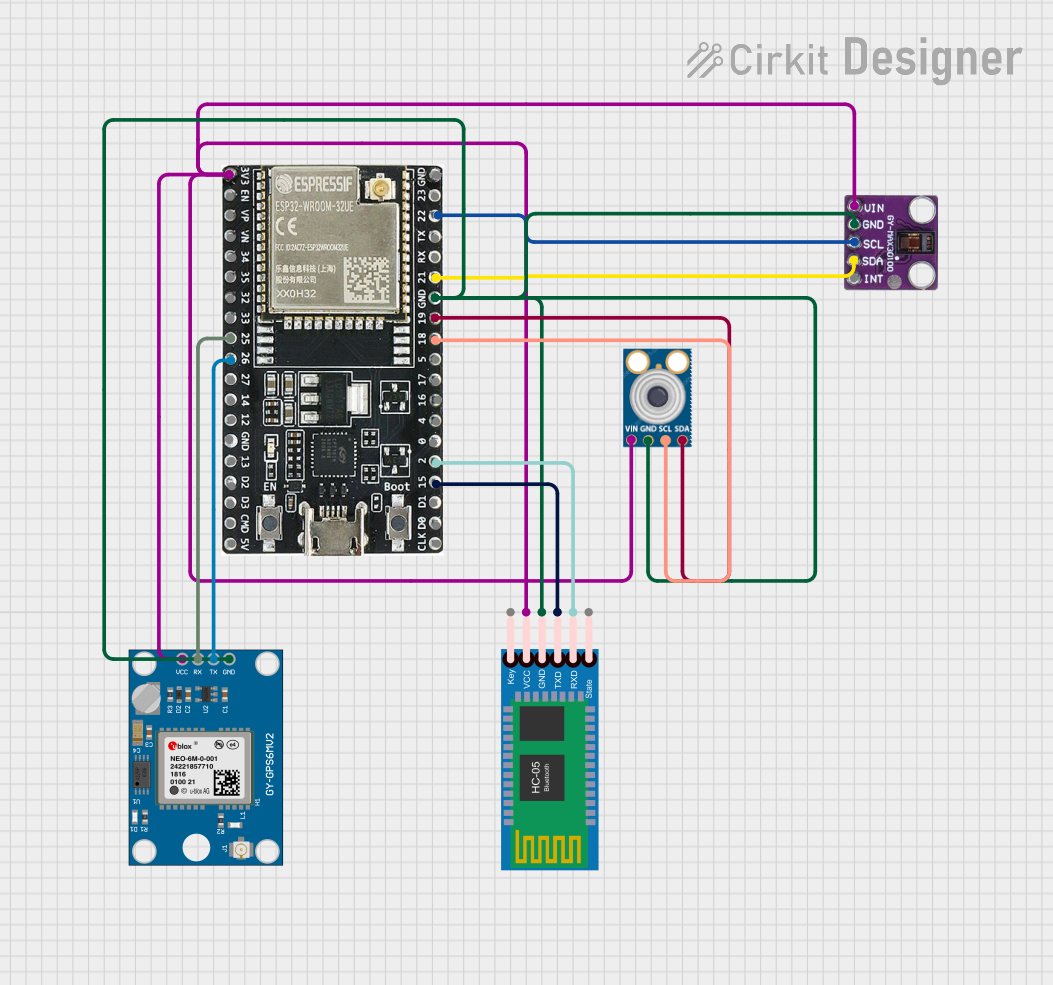
 Open Project in Cirkit Designer
Open Project in Cirkit Designer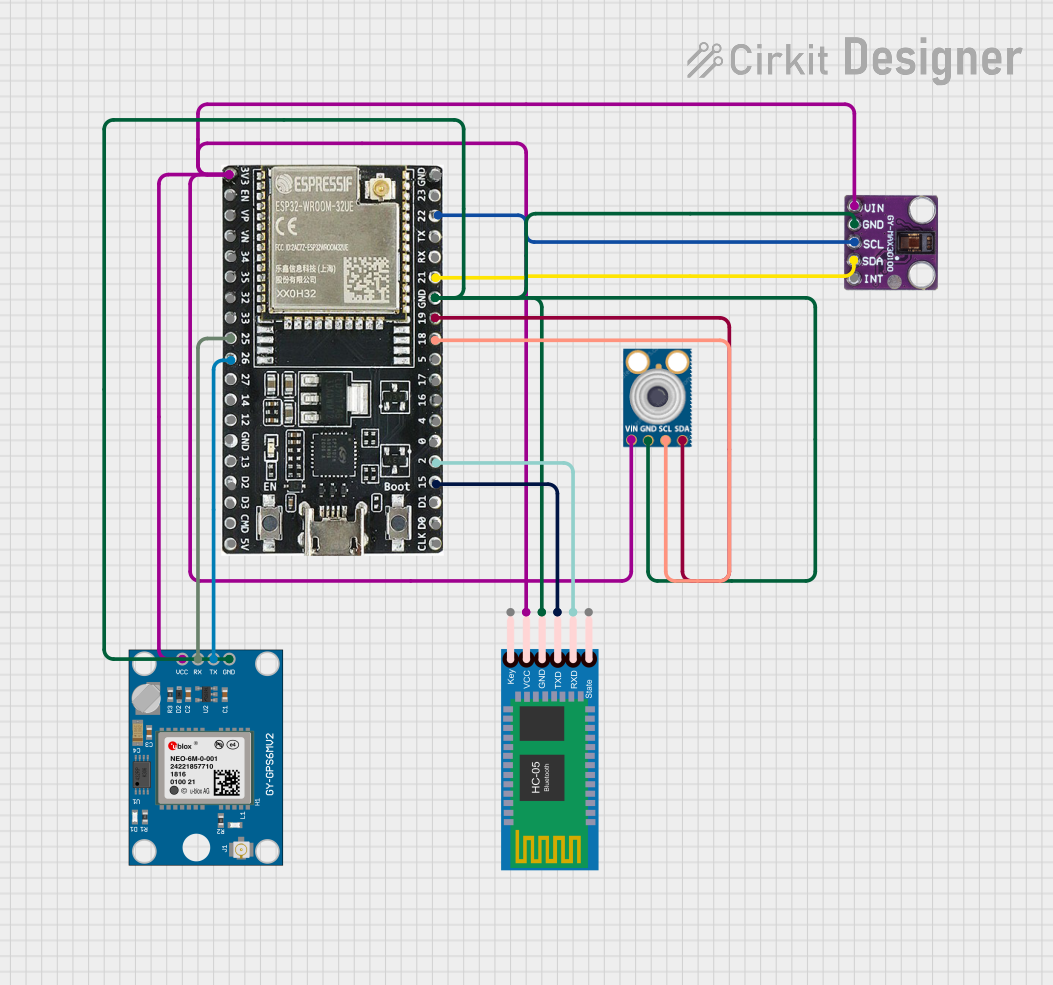
 Open Project in Cirkit Designer
Open Project in Cirkit Designer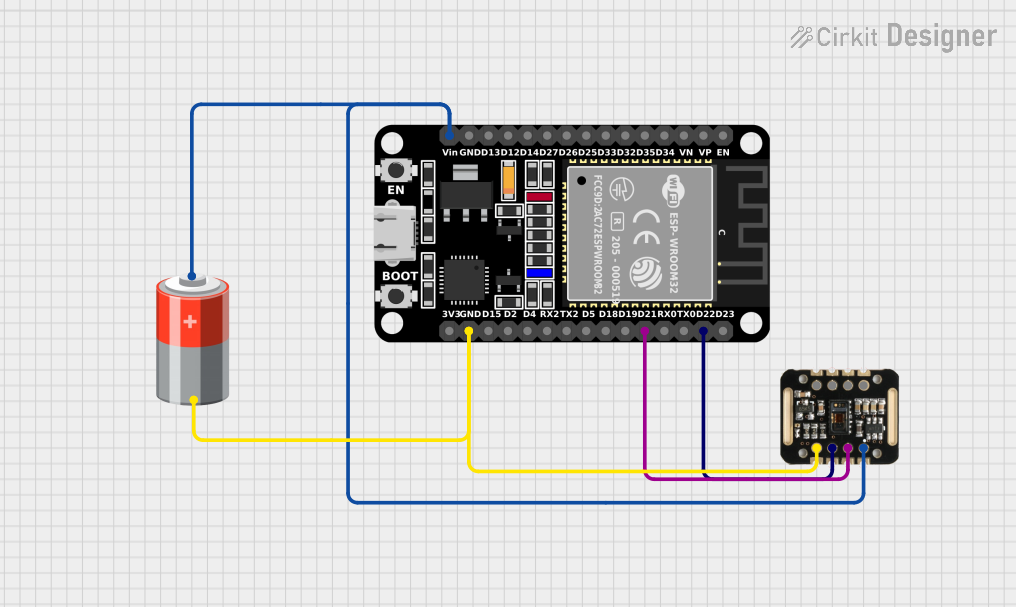
 Open Project in Cirkit Designer
Open Project in Cirkit DesignerExplore Projects Built with max30102

 Open Project in Cirkit Designer
Open Project in Cirkit Designer
 Open Project in Cirkit Designer
Open Project in Cirkit Designer
 Open Project in Cirkit Designer
Open Project in Cirkit Designer
 Open Project in Cirkit Designer
Open Project in Cirkit DesignerCommon Applications and Use Cases
- Wearable health monitoring devices
- Fitness trackers and smartwatches
- Medical-grade pulse oximeters
- Remote patient monitoring systems
- Research and development in biomedical engineering
Technical Specifications
The MAX30102 is a highly integrated sensor with the following key specifications:
| Parameter | Value |
|---|---|
| Operating Voltage | 1.8V (core) and 3.3V (LED driver) |
| Supply Current | 600 µA (typical, during active operation) |
| Standby Current | 0.7 µA |
| LED Wavelengths | Red: 660 nm, Infrared: 880 nm |
| Sampling Rate | Programmable, up to 1000 samples per second |
| Communication Interface | I2C (7-bit address: 0x57) |
| Operating Temperature Range | -40°C to +85°C |
| Package Dimensions | 5.6 mm x 3.3 mm x 1.55 mm |
Pin Configuration and Descriptions
The MAX30102 has 8 pins, as described in the table below:
| Pin | Name | Description |
|---|---|---|
| 1 | VIN | Power supply input (1.8V for core, 3.3V for LEDs) |
| 2 | GND | Ground connection |
| 3 | SDA | I2C data line |
| 4 | SCL | I2C clock line |
| 5 | INT | Interrupt output (active low) |
| 6 | RD1 | Red LED cathode (internally connected, no external connection required) |
| 7 | IRD1 | Infrared LED cathode (internally connected, no external connection required) |
| 8 | NC | No connection (leave unconnected) |
Usage Instructions
How to Use the MAX30102 in a Circuit
- Power Supply: Connect the VIN pin to a 1.8V or 3.3V power source, depending on the application. Ensure proper decoupling capacitors are used to minimize noise.
- I2C Communication: Connect the SDA and SCL pins to the corresponding I2C pins on your microcontroller. Use pull-up resistors (typically 4.7 kΩ) on both lines.
- Interrupt Pin: The INT pin can be connected to a GPIO pin on the microcontroller to handle interrupts for data-ready signals.
- Ground: Connect the GND pin to the ground of your circuit.
Important Considerations and Best Practices
- Ambient Light Interference: Minimize ambient light interference by properly enclosing the sensor in a dark housing.
- Sampling Rate: Choose an appropriate sampling rate based on your application to balance power consumption and data accuracy.
- Thermal Management: Avoid placing the sensor near heat sources, as temperature variations can affect accuracy.
- I2C Address: Ensure no address conflicts if multiple I2C devices are used on the same bus.
Example Code for Arduino UNO
Below is an example of how to interface the MAX30102 with an Arduino UNO to read heart rate and SpO2 data:
#include <Wire.h>
#include "MAX30105.h" // Include the MAX30102 library (install via Arduino Library Manager)
MAX30105 particleSensor; // Create an instance of the MAX30102 sensor
void setup() {
Serial.begin(9600); // Initialize serial communication
Serial.println("Initializing MAX30102...");
// Initialize the sensor
if (!particleSensor.begin()) {
Serial.println("MAX30102 not detected. Check connections.");
while (1); // Halt execution if the sensor is not found
}
// Configure the sensor
particleSensor.setup(); // Default settings: 50 Hz sampling rate, medium power
particleSensor.setPulseAmplitudeRed(0x1F); // Set red LED brightness
particleSensor.setPulseAmplitudeIR(0x1F); // Set IR LED brightness
}
void loop() {
// Read data from the sensor
long redValue = particleSensor.getRed(); // Get red LED value
long irValue = particleSensor.getIR(); // Get IR LED value
// Print the values to the serial monitor
Serial.print("Red: ");
Serial.print(redValue);
Serial.print(" IR: ");
Serial.println(irValue);
delay(100); // Delay to control the sampling rate
}
Notes:
- Install the SparkFun MAX3010x Pulse Oximeter and Heart Rate Sensor Library via the Arduino Library Manager before running the code.
- Ensure proper pull-up resistors are connected to the SDA and SCL lines.
Troubleshooting and FAQs
Common Issues and Solutions
Sensor Not Detected:
- Cause: Incorrect I2C wiring or address conflict.
- Solution: Verify the SDA and SCL connections. Ensure the I2C address (0x57) matches the library configuration.
Inaccurate Readings:
- Cause: Ambient light interference or improper placement of the sensor.
- Solution: Shield the sensor from ambient light and ensure it is in direct contact with the skin.
No Data Output:
- Cause: Incorrect power supply or library not initialized.
- Solution: Check the power connections and ensure the library is correctly included and initialized.
High Power Consumption:
- Cause: LEDs set to maximum brightness or high sampling rate.
- Solution: Reduce LED brightness and lower the sampling rate in the configuration.
FAQs
Q: Can the MAX30102 measure SpO2 and heart rate simultaneously?
A: Yes, the sensor can measure both parameters simultaneously using its dual LED system.Q: What is the maximum I2C clock speed supported?
A: The MAX30102 supports I2C clock speeds up to 400 kHz (Fast Mode).Q: Can the MAX30102 be used for continuous monitoring?
A: Yes, but ensure proper thermal management and power optimization for long-term use.Q: Is the MAX30102 suitable for medical-grade applications?
A: While it is commonly used in medical devices, additional calibration and certification are required for medical-grade use.